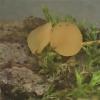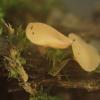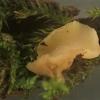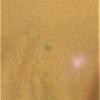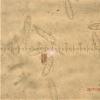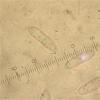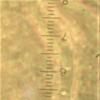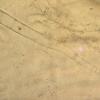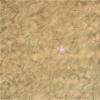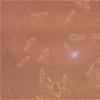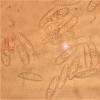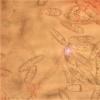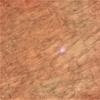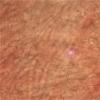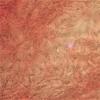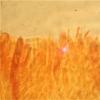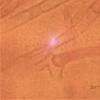
25-08-2025 17:37
 François Freléchoux
François Freléchoux
Bonjour,Nous avons trouvé samedi dernier à l'ét

20-08-2025 19:04
Ethan CrensonHello, This asco was found on the same wood as my

22-08-2025 08:41
Masanori KutsunaHello.Can anyone help me to get this article?Liu H

21-08-2025 02:18
Stefan JakobssonOn a necrotic section of a living Tilia cordata I

19-08-2025 20:58
Ethan CrensonHi all, Here is what I believe to be a Hymenoscyp
Phaeohelotium (?) on Salix caprea "Kilmarnock"
Edvin Johannesen,
28-11-2020 17:00

Apothecia short-stipitate, pale yellow, 2-5 mm, orange upon drying. Asci ca. 140x8 microns, narrowly club-shaped. IKI+ (blue with Lugol), but visible only in a few asci. Spores (16)-18-20 x 4-5 microns. Measures of live structures in water. Spores multiguttulate, becoming 1-septate. Many spores germinating with a long, narrow hypha. Paraphyses with septa, of uniform thickness. Subhymenium/excipulum gradually from textura intricata/epidermoidea to globosa/prismatica. No apparent gelatinised structures. Growing on Salix caprea "Kilmarnock".
Are we in Phaeohelotium or Hymenoscyphus? What is separating the two genera these days?
Thanks.
Edvin Johannesen,
28-11-2020 17:03
Lothar Krieglsteiner,
28-11-2020 17:27

Re : Phaeohelotium (?) on Salix caprea "Kilmarnock"
Hello Edvin,
perhaps Hymenoscyphus conscriptus?
Best regards, Lothar
perhaps Hymenoscyphus conscriptus?
Best regards, Lothar
Hans-Otto Baral,
28-11-2020 18:18

Re : Phaeohelotium (?) on Salix caprea "Kilmarnock"
Or H. subferrugineus. Difficult to say in an overmature stage.
presumably the ectal excipulum is prismatica also at the lower flank.
Edvin Johannesen,
29-11-2020 00:11

Re : Phaeohelotium (?) on Salix caprea "Kilmarnock"
Thanks to both.
I'm a bit confused regarding Hymenoscyphus vs. Phaeohelotium.
Hans-Otto Baral,
29-11-2020 10:08

Re : Phaeohelotium (?) on Salix caprea "Kilmarnock"
This far from easy! And there is Cudoniella in which perhaps various Phaeohelotiums should be placed.
Edvin Johannesen,
29-11-2020 17:26

Re : Phaeohelotium (?) on Salix caprea "Kilmarnock"
It's comforting to know that it's not only difficult for me!
I have some younger apothecia that may not be as overmature. There are only two, old, collections of H. subferrugineus from Norway, so it would interesting to try to verify if this is it. Is there a good way to distinguish H. subferrugineus from H. conscriptus? I see there are som good images of both species at asco-sonneberg.de. Do they reflect the differences?
Hans-Otto Baral,
29-11-2020 17:49

Re : Phaeohelotium (?) on Salix caprea "Kilmarnock"
Yes, but you can also look at my calyculus group folder.
H. conscriptus has a rather low spore lipid content, H. subferrugineus a high content with larger LBs, and spore shape is more distinctly scutuloid (heteropolar, basally pointed).
Edvin Johannesen,
29-11-2020 17:58

Re : Phaeohelotium (?) on Salix caprea "Kilmarnock"
I was looking in your folder, but somehow I overlooked it. Now I see the subferrugineus images. I will have a second look with these characters in mind. Thanks again!
Edvin Johannesen,
29-11-2020 20:54

Re : Phaeohelotium (?) on Salix caprea "Kilmarnock"
OK, I'll give it a shot with a few more pictures in Congo Red, this time from a smaller apothecium (still probably a bit overmature since there are germinating spores). My judgement is that this fits H. subferrugineus, but there is always the danger of confirmation bias. Images show spores, subhymenium, ectal excipulum, and ascus base/crozier, in that order. The final image shows how the ascus (with spores inside) and paraphyse contents are coloured in Baral'sche Lösung.
Thoughts still appreciated.
Mirek Gryc,
30-11-2020 09:26
Re : Phaeohelotium (?) on Salix caprea "Kilmarnock"
Hello all
Although I probably won't help you identify it, let me join the discussion :)
I don't know H. subferrugineus very well, but H. conscriptus is a species so common that I even downplayed it and did not make good documentation for my atlas (sorry, lack of time). I just wanted to mention that I have microscoped at least several dozen of his collections but I have never seen spores with such a rich content. The spores in my collections contained at most a few tiny droplets.
Of course, they were all from Salix spp
best regards
Mirek
Although I probably won't help you identify it, let me join the discussion :)
I don't know H. subferrugineus very well, but H. conscriptus is a species so common that I even downplayed it and did not make good documentation for my atlas (sorry, lack of time). I just wanted to mention that I have microscoped at least several dozen of his collections but I have never seen spores with such a rich content. The spores in my collections contained at most a few tiny droplets.
Of course, they were all from Salix spp
best regards
Mirek
Hans-Otto Baral,
30-11-2020 10:00

Re : Phaeohelotium (?) on Salix caprea "Kilmarnock"
Yes, it is clearly H. subferrugineus. The only question that remains is: what is H. calyculus? So much as I know is that H. subferrugineus is also genetically a clear species, whereas there exist several different sequences for samples identified as H. calyculus, and it is very long ago that I saw a fresh collection of H. calyculus.
I would appreciate collection daat of the present sample.
Zotto
Edvin Johannesen,
30-11-2020 10:23

Re : Phaeohelotium (?) on Salix caprea "Kilmarnock"
Thank you so much, Mirek and Zotto! I will send you the colletion details, Zotto, by email, as soon as I have it.


